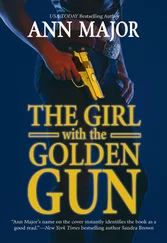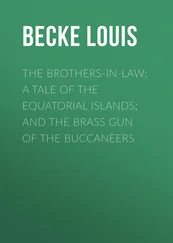That afternoon I drove north a hundred miles or so to Harrisonburg, Virginia, to visit a gun show under way at the fairgrounds just south of the city. Dozens of federally-licensed gun dealers had spread their guns atop folding tables. As federal licensees they were obligated to obey all federal and state regulations governing firearms sales, including Virginia laws requiring an instant background check on handgun purchases and limiting such purchases to one a month. The same laws, however, did not apply to a young man and his female companion, who walked the aisles with signs pinned to their backs advertising two German Lugers and an M-1 carbine for sale. Nor did these laws apply to a man who had settled in a chair at one end of an empty table, where he had opened his attache case to display four handguns offered for private sale. Outside, at an adjacent flea market, another six men were peddling their personal weapons. Anyone, with any kind of record, could have bought a handgun here. A three-hour drive would have brought the buyer to Washington or Baltimore, two cities where murder has eclipsed stickball as a pursuit of the young.
Accountability continued its traditional absence from America’s gun trade. Certain guns, most notably the inexpensive Raven, Jennings, Davis, and Lorcin pocket semi-automatics, are well known to police as weapons commonly used in crime. In the first quarter of 1994, the Lorcin L380, a .380 caliber pistol, was the most frequently traced weapon in America—traced more often than the Smith & Wesson .38 revolver, produced and distributed over the years in numbers that dwarf the Lorcin’s production. Next in line came the Davis .380, Raven .25, Lorcin .25, Mossberg Model 500 shotgun—an emerging favorite among crooks—and the Jennings .22. The manufacturers clearly know the extent to which their products are implicated in the country’s serious crimes because they field the calls from ATF’s tracing center. Yet they continue to produce the weapons, distributors continue to buy them, and dealers—even some who work full time as police officers or police department armorers—continue to sell them. No public means exists for regulating the design of such guns, or their manufacture and distribution. We have outlawed the importation of such weapons from foreign manufacturers, but otherwise we leave such matters to the good conscience of our domestic producers, because they are, after all, red-blooded American companies.
Privately, the big manufacturers complain that they are misunderstood, that the liberal media distort their beliefs. They argue that they are simply producing legitimate products; that their responsibility ends when the guns arrive at the warehouses of their distributors. The distributors, in turn, say their responsibility ends when the guns reach the retail dealer. And the dealers say they cannot police the behavior of their buyers. A gun, as Shane said, is just a tool, only as good or as bad as the person who wields it.
However frivolous these arguments seem when juxtaposed with year-end tallies of America’s gun-shot dead, they nonetheless tug resilient strands from that web of beliefs that define America and Americans: the free market, self-determination, the right to keep and bear arms, an armed populace as a check against tyranny.
But reform of America’s firearms regulations will continue. One day a truly rational system of firearms laws will exist, because such a system must exist. It is the only rational course, and for a culture like ours that still prides itself on common sense and rationality, it is an inevitable course. Stranger things have happened in the world. The Soviet Union collapsed. Israel and the PLO settled their feud. A truce was declared in Northern Ireland amid talk of an end to the Troubles. And America at last seemed to have awakened to what doctors and the American Cancer Society had said all along, that tobacco is indeed inherently dangerous, that smokers ought to be isolated, and that tobacco companies ought at last to begin bearing the social costs incurred by smoking.
A similar sea change seemed under way with regard to guns. Gun buy-backs and swaps began to proliferate, providing little direct impact on crime but helping to raise consciousness about guns and their prevalence in America. Major newspapers around the country launched multi-part investigative reports on guns and the gun trade. Grassroots organizations, similar in design and spirit to Mothers Against Drunk Driving, began forming in New York, Los Angeles, and elsewhere. And for the first time, large masses of individual citizens began marching for firearm-regulation reform. In Maryland, marchers advanced on Annapolis, the state capital, in support of new gun legislation. In San Francisco, some one hundred thousand people marched down Market Street at the center of the city on the one-year anniversary of Ferri’s law firm rampage. By the fall, grassroots activists were planning a “Silent March” on Washington. They proposed to set down an empty pair of shoes for every man, woman, and child killed with a firearm, and to array these shoes in a single line ending at the Capitol steps. Public service ads, including one featuring President Bill Clinton, began urging a reduction in violence. Granted, no gang leader in South Chicago is likely to pay much attention to such ads, but, like gun buy-backs, they help energize the plasma of public opinion and reinforce the still all-too-novel idea that firearms violence is unacceptable.
Increasingly, victims and gun-control advocates have turned to the courts to try to force the firearms production and distribution network to a higher level of accountability. In the spring of 1994, a civil jury in Texas—a state known for its tolerance of guns—assessed a $17 million penalty against Remington Arms Co. after finding that the company knew of a design defect in one of its rifles, a defect which cost the plaintiff one of his feet. Just over $2 million of the award represented actual damages; the rest were punitive damages. In 1994, the Center to Prevent Handgun Violence, an affiliate of Handgun Control Inc., went so far as to file a lawsuit against Intratec, alleging the TEC-9 pistol used by Ferri was an unduly hazardous product.
I have often thought that such lawsuits could show the way to the ultimate solution to the problem of limiting the flow of guns. Suppose once again America repealed all its gun laws—but now imagine replacing those laws not with my Life and Liberty Preservation Act, but with a single federal law assigning to gun manufacturers strict liability for the use of their products. In other words, suppose Congress made America’s gun industry financially responsible for every time a firearm was used to injure or kill someone. Justifiable shootings by police or by citizens defending themselves would of course be excepted.
The NRA and its libertarian core would get what they have sought all along: unrestrained access to firearms. Manufacturers could build and sell any weapons they chose, distributors and dealers could sell them to anyone, including felons, fugitives, drug addicts, and children. But all parties in the distribution chain would now have to accept legal and financial responsibility for such libertine commercial behavior.
I guarantee that within a breathtakingly short period of time, the manufacturers, distributors and dealers of America would by themselves establish a more stringent, more efficient, more highly automated system of distribution restrictions than anything ever dreamed of by Handgun Control Inc. Suddenly all firearms would be childproof, perhaps with built-in combination locks; the manufacturers’ advertising would concentrate on assuring the market that guns were as macho as always—just different. All pistols would include magazine safeties, which deactivate the firearm when the magazine is removed, thus ensuring that no one gets hurt if someone forgets there is a live round still in the chamber. Manufacturers doubtless would require gun buyers to present some kind of prior medical authorization—a kind of prescription—to assure them that the buyer was not insane, depressed, despondent, or otherwise likely to contemplate murder and suicide. The first thing the manufacturers would do is make gun proficiency and safety education a mandatory requirement for gun ownership. In short, with one bold stroke America could eliminate all the bizarre and dangerous behaviors of the firearms trade, and do it in a distinctly American, free-market way.
Читать дальше
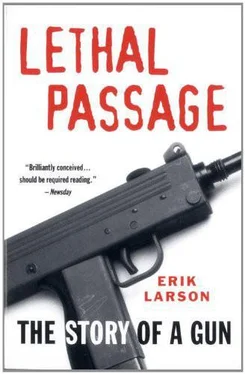
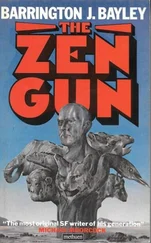
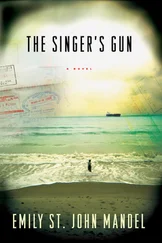

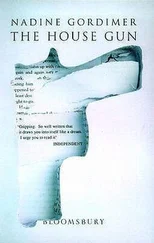

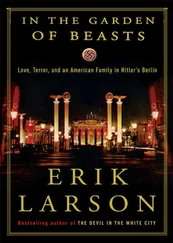

![Ричард Деминг - Whistle Past the Graveyard [= Give the Girl a Gun]](/books/412176/richard-deming-whistle-past-the-graveyard-give-t-thumb.webp)
